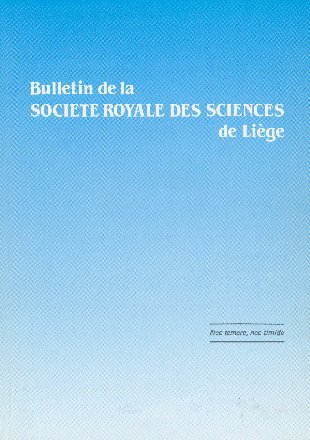- Startpagina tijdschrift
- Volume 80 - Année 2011
- The multi-wavelength view of Hot, Massive Stars - Foreword
Weergave(s): 892 (26 ULiège)
Download(s): 156 (8 ULiège)
The 39th Liège International Astrophysical Colloquium
The multi-wavelength view of Hot, Massive Stars - Foreword
Liège, 12 – 16 July 2010

Documenten bij dit artikel
Bijlagen
1Foreword
2Massive stars are certainly among the most fascinating objects of stellar populations. They trigger many astrophysical processes from star formation to the chemical enrichment of the interstellar medium. Yet, their properties are still not fully understood and these objects are therefore at the core of many ongoing research activities.
3 With the advent of new, high-performance, ground-based and space-borne facilities, the multi-wavelength investigation of hot, massive stars has definitely been boosted over the last decade. It is indeed nowadays possible to study these objects over a wide part of the electromagnetic spectrum, all the way from radio waves to gamma-rays.
4Motivated by this fact, we decided to organize a conference devoted to this topic in the framework of the well-established series of Liège International Astrophysical Colloquia (LIAC). The resonance in the community was extremely positive, with many proposals for high-quality contributions. During the week of 12 - 16 July 2010, 138 astrophysicists, from institutes in 21 countries all over the world, gathered in Liège to discuss how the multi-wavelength approach has revolutionized their research on massive stars (This conference was one of the biggest events so far in the series of the Liège International Astrophysical Colloquia).
5The colloquium was organized into five thematic sessions, and the present proceedings are organized along the same chapters:
6-stellar winds, diagnostics across the electromagnetic spectrum;
7-massive star formation, confronting theory and observation;
8-evolution and interaction of massive stars with their environment;
9-future instrumentation and its application to massive star research;
10-massive binaries: interaction and evolution.
11The multi-wavelength view of Hot, Massive Stars was actually not the first Liège colloquium specifically dealing with the topic of massive stars. In 1996, the 33rd edition of the LIAC was devoted to Wolf-Rayet Stars in the Framework of Stellar Evolution, celebrating the 20th anniversary of the “Conti scenario” proposed by Peter Conti at the 20th LIAC (Astrophysique & Spectroscopie) in 1975. In 2008, the 38th LIAC was dealing with Evolution and pulsation of massive stars on the main-sequence and close to it.
12At this stage, it is our great pleasure to thank a number of people who helped us making this conference a success and who contributed to these proceedings. To start, we would like to thank our colleagues of the Scientific Organizing Committee who enthusiastically contributed to the scientific organization of the colloquium, as well the invited reviewers and conference participants who delivered many interesting and exciting contributions (The final programme featured 15 invited reviews, 33 contributed talks and 86 posters). Our thanks go also to the numerous colleagues who agreed to review the articles submitted to these proceedings and whose referee reports helped the authors to improve their papers. We gratefully acknowledge the support by the conference sponsors (the Liège University and its Science Faculty in particular; the Fonds de la Recherche Scientifique - FNRS; the AMOS company; the City of Liège; the European Space Agency - ESA; Rejouisciences, the Centre Spatial de Liège - CSL, Astronomy & Astrophysics). Last but not least, our warmest thanks go also to our colleagues of the Local Organizing Committee: our secretaries Denise Caro and Sylvia Grandjean for their invaluable help before, during and after the conference; our system manager Alain Detal for taking care of the conference webpage and solving the software issues during the conference; Eric Gosset, Thierry Morel and Jean-Pierre Swings for their advice, their efficient help (especially to track the discussions); and finally many of our Liège colleagues who spent some of their time to help us in the practical organization of this event.
13The editors: Gregor Rauw,
14Michaël De Becker,
15Yaël Nazé,
16Jean-Marie Vreux,
17& Peredur Williams
Om dit artikel te citeren:
Over : Gregor Rauw
GAPHE, Dépt AGO, ULg, Allée du 6 Août 17, Bât B5C, B4000-Liège, Belgium
Over : Michaël De Becker
GAPHE, Dépt AGO, ULg, Allée du 6 Août 17, Bât B5C, B4000-Liège, Belgium
Over : Yaël Nazé
GAPHE, Dépt AGO, ULg, Allée du 6 Août 17, Bât B5C, B4000-Liège, Belgium
Over : Jean-Marie Vreux
GAPHE, Dépt AGO, ULg, Allée du 6 Août 17, Bât B5C, B4000-Liège, Belgium
Over : Peredur Williams
Institute for Astronomy, Royal Observatory, Edinburgh, UK






